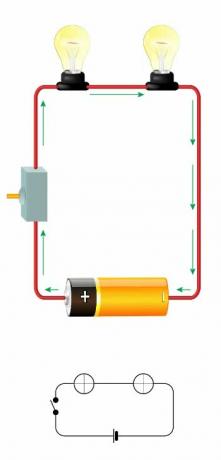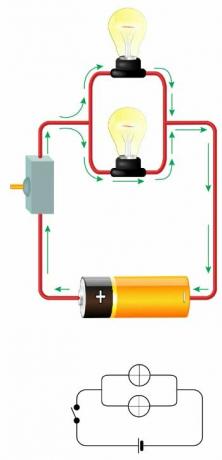Electric circuit is a closed circuit. It starts and ends at the same point and is formed by several elements that link together and thus make the passage of electric current possible.
Elements of an Electrical Circuit
Resistors
You resistors, or resistors, are components of the electrical circuit that have two functions. One is to convert electrical energy into thermal energy, the other is to limit the passage of electrical current by controlling the voltage.
Capacitors
You capacitors, or capacitors, are electrical components that store electrical charges. These electrical charges are used whenever there is resistance, that is, whenever the passage of electrical current is difficult.
Generators
You generators they are devices that prolong the potential difference between two bodies. This is how they are able to transform different types of energy.
Conductors
Conductors are the elements that allow loads to easily circulate in an electrical circuit.
Inductors
Inductors are devices that store electrical energy.
Simple Electric Circuit
Simple Electric Circuit is one that runs only one way. The most common example is a battery.
In batteries, it is always the same electrons that are circulating. Otherwise, they would not be able to receive energy right after having supplied it.
Series Electrical Circuit

Series Electrical Circuit is one in which there is an association. From this association, the components are linked together in the same sequence and in the same direction.
As an example, we can mention the lamps used in the decoration of Christmas trees. The circuit made by them is simple and the fact that one bulb burns out harms the rest.
Parallel Electric Circuit

Parallel Electric Circuit is one in which there is an association where the electric current is divided along the circuit.
This happens so that there is constant electrical voltage at all points. An example of this is the residential electrical circuit, where all existing outlets in the house must have the same intensity of electrical current.
To learn more, see also
- Electric power
- Kirchhoff's Laws
- Resistor Association - Exercises

